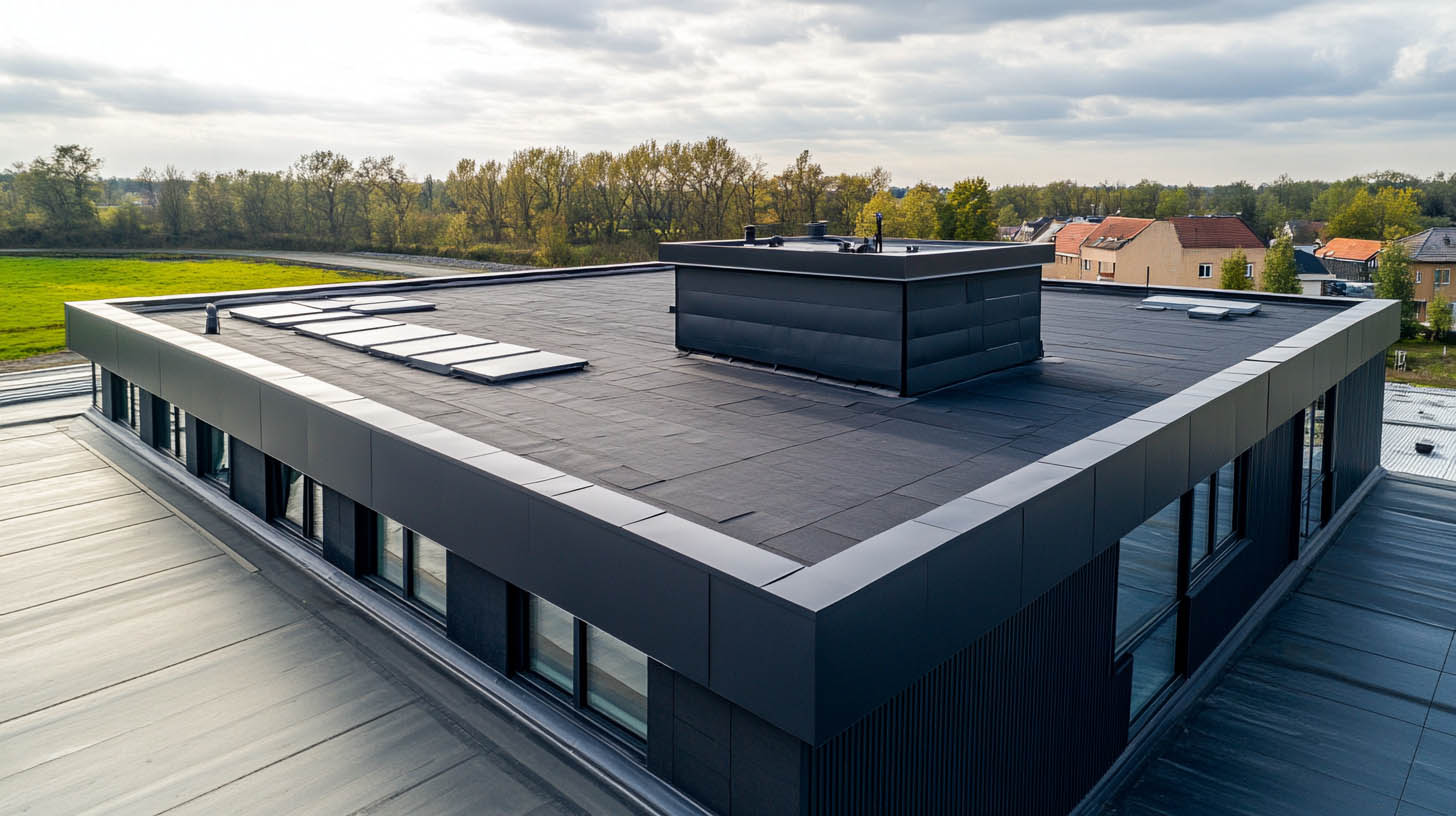Flat roofing systems are becoming increasingly popular for both commercial and residential buildings due to their distinctive look and various advantages. At Champion Restoration and Construction, we are committed to providing comprehensive insights into flat roofing options to help you make the best decision for your property. Champion Restoration and Construction offers a detailed overview of the different types of flat roofing systems, their benefits, and considerations.
What Is a Flat Roof?
A flat roof is characterized by its low pitch, typically no more than 10 degrees, giving it a nearly level appearance. Flat roofs are constructed using a layer of insulation over a waterproof membrane, creating a barrier that prevents moisture from entering the building.
Types of Flat Roofing Systems
Rubber Membrane Roof
Rubber membrane roofs are made from a durable rubber material installed in layers. While they are lightweight and easy to install, they can be prone to cracking or puncturing over time.
Modified Bitumen Roof
Modified bitumen roofs consist of asphalt combined with rubber. These roofs are installed in layers bonded together for enhanced strength and durability. They are more resistant to weathering compared to rubber membrane roofs but can still develop cracks or punctures.
TPO Roofing
Thermoplastic Olefin (TPO) roofing is a cost-effective option that is durable and resistant to debris build-up, bacteria, and dirt. TPO roofs are flexible and less susceptible to tears and impact damage.
Built-Up Roof (BUR)
Built-up roofs are constructed from multiple layers of asphalt, tar, and gravel, topped with a protective membrane to ensure water resistance. BURs are known for their durability but can be more expensive than other flat roofing options.
PVC Membrane Roof
PVC membrane roofs are made from polyvinyl chloride, offering lightweight construction and easy installation. However, they can be more costly and may require specialized maintenance.
Single-Ply Membrane Roof
Single-ply membrane roofs consist of a single layer of rubber material. They are lightweight and easy to install but can be prone to cracks and punctures.
EPDM Roof
Ethylene Propylene Diene Monomer (EPDM) roofs are known for their high resistance to water damage and long lifespan. However, they can be more expensive than other flat roofing systems.
Flintlastic Roofing
Flintlastic roofing systems offer the protection of modified bitumen with easy installation. They come in a variety of colors to match existing shingles, improving the aesthetic appeal and energy efficiency of your flat roof.
Benefits of Flat Roofing Systems
Easy Maintenance
Flat roofs are easier to maintain than sloped roofs, making them ideal for buildings with rooftop equipment that requires regular maintenance.
Space Utilization
Flat roofs offer additional usable space for rooftop gardens, patios, or even additional living areas, enhancing the functionality of your property.
Energy Efficiency
Flat roofs can be designed with reflective coatings or other energy-efficient materials, helping to reduce heating and cooling costs.
Design Flexibility
Flat roofs provide greater design flexibility, allowing for various shapes and sizes to suit creative or unique architectural designs.
Low Profile
Flat roofs are unobtrusive and suitable for buildings in areas with strict height restrictions.
Environmental Benefits
Flat roofs can be designed to maximize energy efficiency and reduce the building’s carbon footprint. They can also be equipped to collect rainwater for reuse.
Drawbacks of Flat Roofing Systems
Susceptibility to Leaks
Flat roofs are more prone to leaks and water damage due to their minimal pitch, which can lead to pooling water and compromised structural integrity.
Aesthetic Limitations
Flat roofs may not be as visually appealing as sloped roofs, which can be a drawback in certain residential neighborhoods or historic areas.
Shorter Lifespan
Flat roofs generally have a shorter lifespan compared to sloped roofs, requiring more frequent maintenance and potential replacement.
Drainage Issues
Proper drainage systems are essential for flat roofs to prevent water damage. Inadequate drainage can lead to pooling water and leaks.
Higher Risk of Damage
Flat roofs are more vulnerable to damage from hail, high winds, and debris, which can result in costly repairs or replacements.
Weight Limitations
Flat roofs must be designed to support the weight of rooftop equipment to prevent sagging or structural damage.
Ideal Applications for Flat Roofs
Flat roofs are particularly suitable for buildings with large surface areas where pitched roofs would be impractical. They are also ideal for properties emphasizing outdoor living spaces, such as rooftop gardens or decks, and for installations of solar panels for energy efficiency.
Residential vs. Commercial Flat Roofs
While flat roofs are common in commercial buildings due to their low maintenance and cost-effectiveness, they are also an excellent choice for residential buildings that require additional usable space and easy maintenance.
Conclusion
Flat roofing systems offer numerous benefits, including affordability, ease of maintenance, and space utilization. However, they also have certain drawbacks, such as susceptibility to leaks and drainage issues. By carefully weighing the pros and cons, you can determine if a flat roof is the right choice for your building.
For more information on the best replacement windows for your home, click here.

